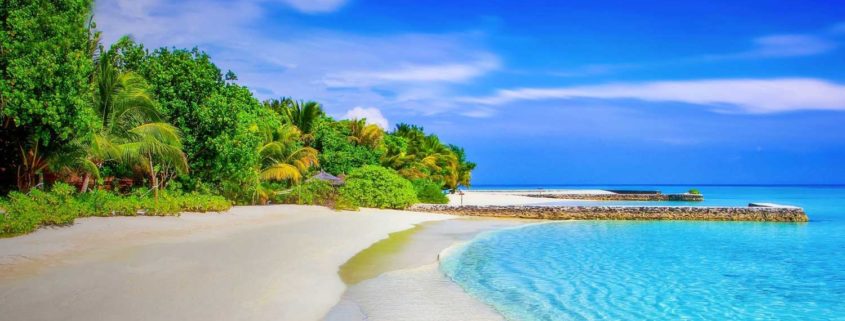$3M Financial Turnaround For A Private Southeastern Island Community
Case Study
Facility: Private Full Service Country Club on a Barrier Island
Location: Southeastern United States
Ownership: Member Owned
Focus: Financial Turnaround & Cost Containment
About: Club offers 18 holes of top-end golf, beaches, pools, tennis, fine and casual dining, property ownership, equestrian, and other amenities in a secluded private island environment. Despite a roster of over 900 club members, this facility was bleeding money. The annual operating budget of $20 million was sinking this extraordinary place slowly but surely.
Challenges We Faced:
This facility faced multiple complex challenges:
- Ferry System: The only way to get to the island club was via a 30-minute ferry ride through ferry system operated by the club. The fleet consisted of 6 vessels, 15 boat captains, and a $6 Million annual operating cost. Boats were running hourly to and from the mainland from 6:00 am until 12:00 am at night. The Club also ran a water taxi on an on-call basis day and night. Many boat runs were sparsely occupied.
- Real Estate: The economy was slumping, and real estate values in particular were hitting an extreme low point. To compound the issue, land ownership was directly tied to club membership. There was no way to vacate your property and membership obligations unless you sold both your property and membership to a new buyer. Members could not give away beautiful pieces of land for $1. This became a black hole and a source of tremendous frustration for many club members.
- Conflicts of Interest: This club faced extreme problems with conflicts of interest at the Board level. At the time, there were only 40 full-time resident members on the island, while the other 860 members lived remotely. Residents controlled the Board seats and made all the decisions and the other members were completely captive – continuously subject to unending dues payments and frequent assessments.
The perfect storm of these three challenges led to a toxic culture and extreme frustration. Remote members were subsequently withholding payments, and tossing their membership card at the board to quit. “Sue me” was their response. Without a complete financial turnaround, the club was in deep trouble.
Many more people were trying to escape the club than those who were trying to get in. The Board, because of its makeup could not clearly see that the club was in very deep trouble. They were hemorrhaging $2 Million per year at the time.
Solutions We Deployed:
With such a complex series of problems, numerous solutions had to be deployed quickly at this club.
Awareness
The first step was was to help club leadership recognize and understand the real problems they were facing. We initiated a comprehensive facility competitive analysis to determine how the club was positioned in the marketplace, and whether the facility was even remotely competitive for bringing in net new business. Of course, it was ultimately apparent that the club was not positioned competitively at all. The analysis served to make the Board aware of their dire situation, and get full buy-in that things needed to change quickly.
Education
Sitting Board Members typically are very successful and intelligent people. The know their own industries and businesses, but most do not come from a golf industry background. They are not generally familiar with standard performance metrics necessary for long-term sustainability. Deep dives into each and every financial line item revealed considerable opportunity for immediate cost containment without sacrificing service levels or Member experience in any way. The Board became well aware of the $6 Million elephant in the room: The ferry boat and transportation system. The club simply could not survive.
Empowerment
We needed to find a Board Members who would be charismatic and open-minded enough to champion this cause. The Members needed to provide Management with the support and freedom to make required adjustments to move the club forward. The newly elected Club President became that person. Although his background was in Corporate America, he had a very entrepreneurial mindset. He convinced the Board to give Management one shot to fix the cultural issues at the club, balance the budget, and build a foundation for future growth.
Revised Membership
In light of the competitive analysis, Management was able to craft relevant membership offerings and revised pricing levels. Mutually agreeable programs allowed for these members to escape captivity, dramatically improving Club culture and outlook. The toxic environment at the Club was alleviated. Many Members eventually removed themselves from the exit list ane revitalized their interest in the Club.
Utilization
The membership revision also deployed creative opportunities for all of the remote Members who were struggling with the “Black Hole” situation. We developed solutions for collecting on delinquent dues accounts and provided viable options for these people to consider utilizing facilities once again. Programs included strategic partnerships for greatly discounted lodging for entertaining friends and visitors in the extraordinary location. Now, customized entertainment packages for groups of 8, 16, 32+ were marketing to Membership and crafted with input from the customer.
Accessibility
Resident members live in beautiful, large oceanfront or secluded homes on the island. We developed opportunities for these Members to put these homes in a rental pool to facilitate the growing demand for vacationing and entertaining remote members. This was a great win-win circumstance for all members and for the Club as well.
Transportation
Ultimately, the only hope for a complete financial turnaround was to address transportation expenses. We conducted a detail ferry system utilization and cost analysis during the busiest months of the year. Results revealed that operating hours and trip frequency could be optimized to reduce costs. We eliminated the water taxi after 2:00 am except in the event of medical emergency. Regular ferry runs were are reduced during off-peak months based on utilization data we had acquired. The impact on access was only minimal, while cost savings were tremendous.
The Outcome: A Remarkable Financial Turnaround
Today, the Club stands as a shining example of how data serves to inform strategic decision making. Detailed analysis not only educated Management and the Board on opportunities in the marketplace, but served as an irrefutable tool for achieving necessary buy-in to execute change.
The supply and demand death spiral has been reversed. Members are utilizing the Club and bringing in groups and accompanied guest play like never before.
Resident members are reaping the benefits of island home ownership through improved rental cash flow in many circumstances. Resulting real estate valuations have returned to healthy levels.
Ultimately, the Board was true to its promise to give Management the opportunity to bring expert, yet data-backed solutions to their Club. In the very first year, we transitioned from a $2 Million operational loss back to an operational gain of nearly $1 Million.
The Club is healthy, the culture has returned to vibrance and positivity, and Members now are enjoying the high-end recreational experience they originally signed up for.
- How Golf Courses are Leveraging Cheaper Remote Consulting for Success - October 5, 2023
- Top 3 Reasons Why Private Golf Courses are Struggling in 2023 - September 5, 2023
- How to make the most of your prospect lists - May 7, 2019







